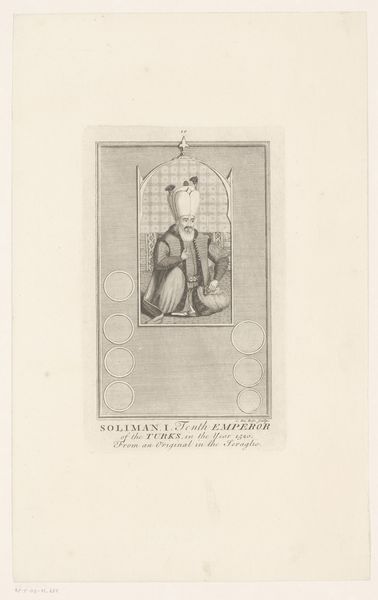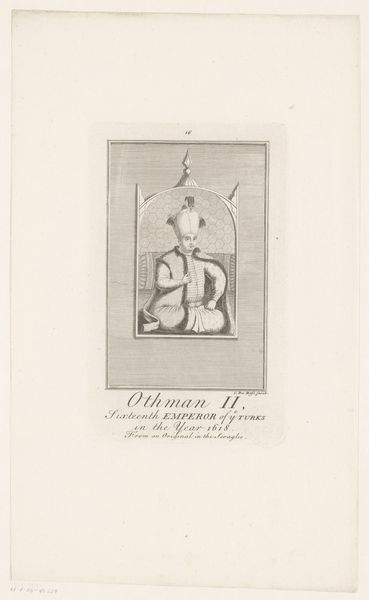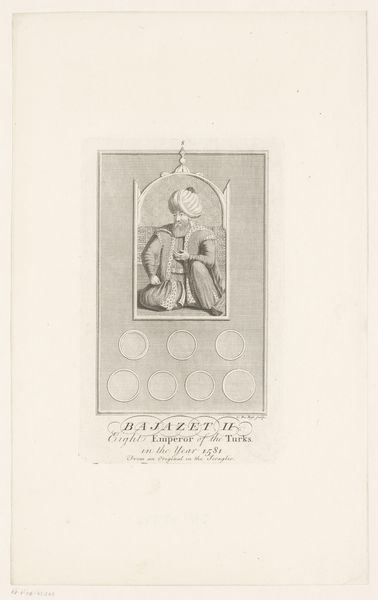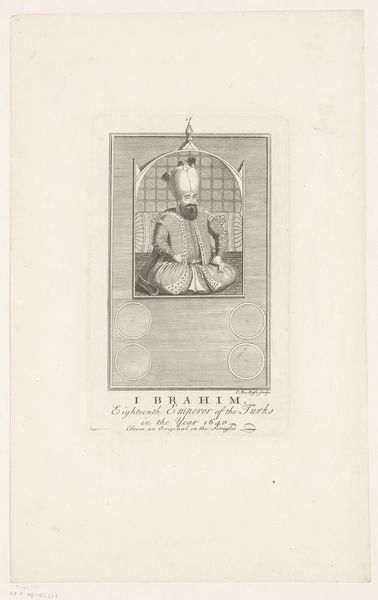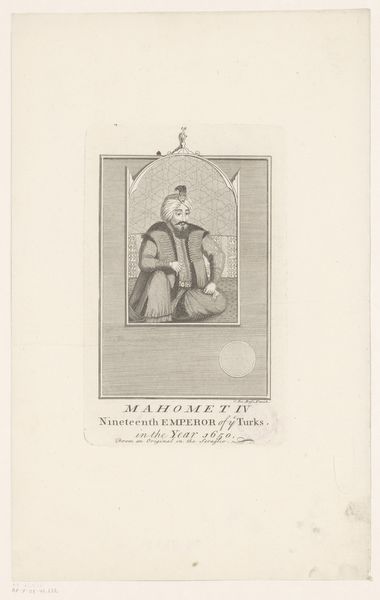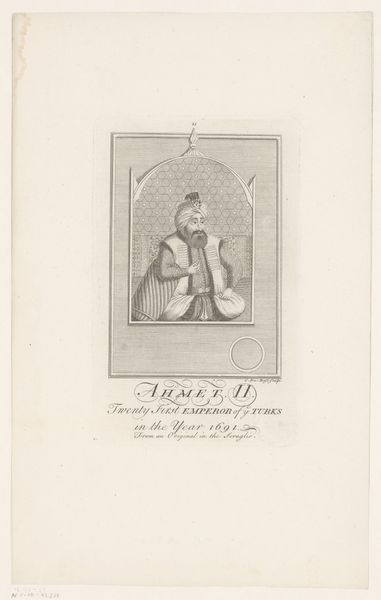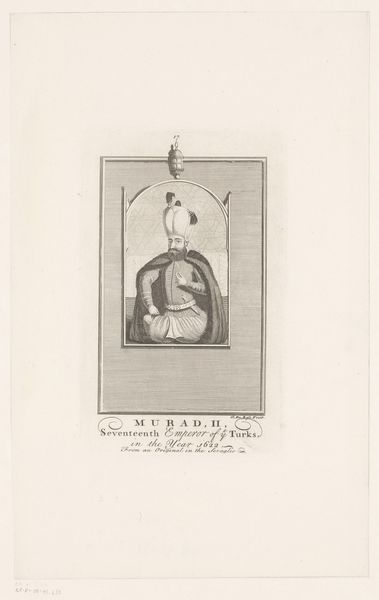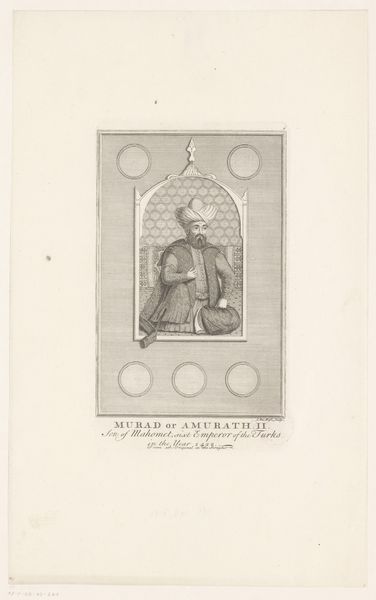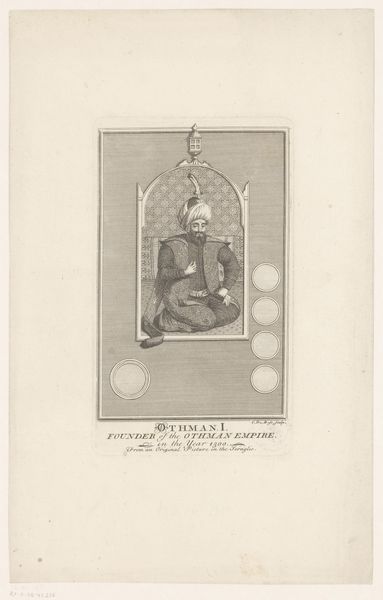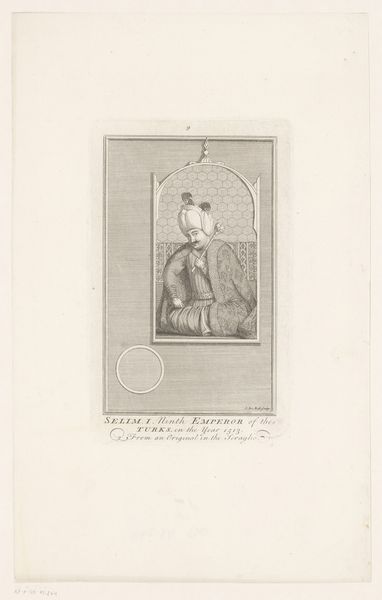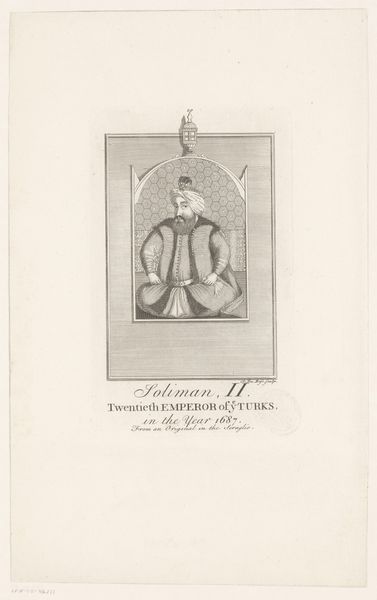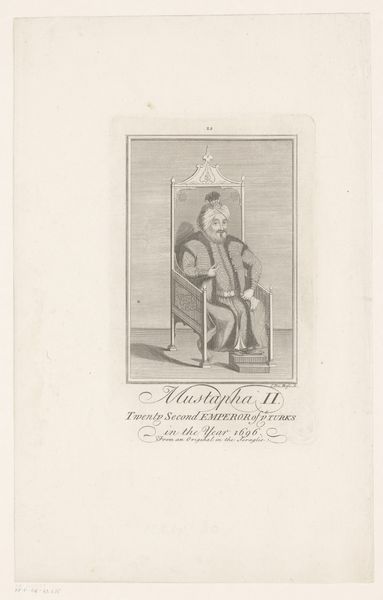
print, paper, engraving
#
portrait
# print
#
old engraving style
#
figuration
#
paper
#
line
#
islamic-art
#
history-painting
#
engraving
Dimensions: height 195 mm, width 122 mm
Copyright: Rijks Museum: Open Domain
Claude DuBosc created this print, "Portret van Mehmet III," sometime between 1682 and 1745, using engraving. The delicate lines of the engraving define a portrait of Mehmet III, contained within a rectangular border and topped with an arched frame. The subdued tones lend a sense of historical distance, inviting quiet contemplation. Notice how DuBosc uses line and form to create a sense of depth and texture, particularly in the rendering of Mehmet III's garments and turban. The geometric pattern behind the figure functions almost as a backdrop, enhancing the flatness of the figure. This tension between flatness and depth is further complicated by the shading, which subtly models the face and clothing, creating a complex interplay of visual elements. The composition, though seemingly straightforward, engages with the broader discourse of representation and power. By framing Mehmet III in this way, DuBosc isn't just depicting a ruler; he's also commenting on how images mediate our understanding of historical figures and cultural difference. The use of geometric patterns and controlled lines reflects a desire to understand and categorize the world, revealing the underlying structures that shape our perceptions.
Comments
No comments
Be the first to comment and join the conversation on the ultimate creative platform.
